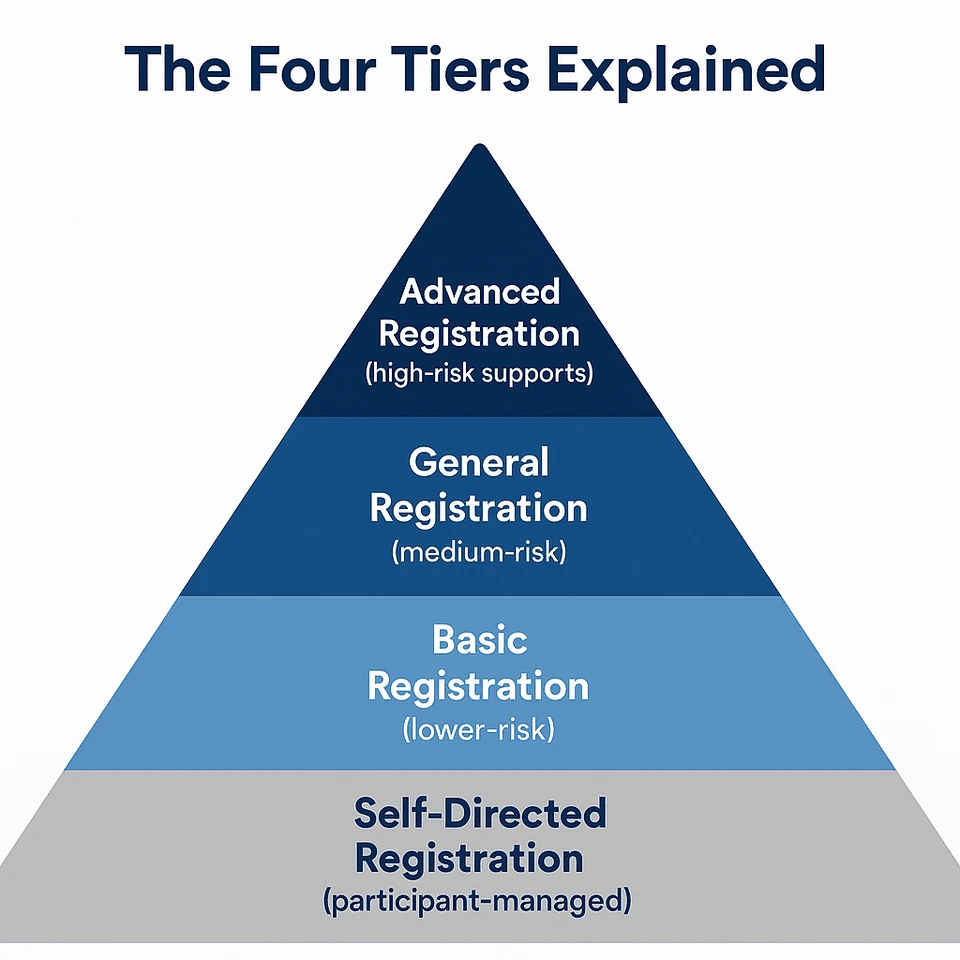The Four-Tiered Revolution: How Smart Providers Are Positioning for 2025
While most NDIS providers are scrambling to understand the current registration requirements, a select group of strategic providers are already positioning themselves for the revolutionary four-tiered system coming in 2025. The NDIS Provider and Worker Registration Taskforce didn’t just recommend minor tweaks – they’ve designed a complete overhaul that will separate the strategic providers from those who are simply reacting to change.
The Four Tiers Explained: The new system introduces Advanced Registration (high-risk supports), General Registration (medium-risk), Basic Registration (lower-risk), and Self-Directed Registration (participant-managed). But here’s what most providers miss: this isn’t just about different registration categories – it’s about completely different business models, pricing structures, and competitive positioning.
Strategic Positioning Strategies:
For Advanced Registration Providers: Advanced Registration providers will serve the highest-risk, highest-value participants. The strategic opportunity lies in developing specialized expertise that justifies premium pricing while managing enhanced compliance requirements. Smart providers are already building specialized clinical teams, developing proprietary assessment tools, and creating outcome measurement systems that will become competitive advantages.
For General Registration Providers: This middle tier represents the largest market opportunity but also the most competitive. Success requires operational excellence and technology integration. Providers should be developing scalable systems now, building referral networks with Advanced providers for complex cases, and positioning for potential tier progression as they develop capabilities.
For Basic Registration Providers: The efficiency play. Success requires lean operations, technology automation, and volume-based business models. Smart providers are already implementing management software, developing standardized service delivery protocols, and building marketing systems that can operate at scale.
The Technology Imperative: Every tier requires sophisticated technology infrastructure. The PACE reporting system, Digital Compliance Register, and upcoming Worker Registration Scheme all demand real-time data management capabilities. Providers planning now are implementing integrated NDIS management platforms, automated compliance tracking, and participant outcome measurement systems.
Financial Modeling for Each Tier: With 67% of current providers operating at a loss, financial sustainability requires tier-specific strategies. Advanced Registration providers can command premium pricing but face higher compliance costs. General Registration providers need volume and efficiency. Basic Registration providers require automation and scale.
Conclusion: The four-tiered system isn’t coming – it’s already influencing NDIS Commission thinking and policy development. Providers who understand this shift and position strategically now will dominate their chosen tier. Those who wait will find themselves competing for scraps in an oversaturated Basic Registration market.
Ready to position your NDIS business for the four-tiered future? Our Strategic Positioning Assessment reveals exactly where you should focus →
